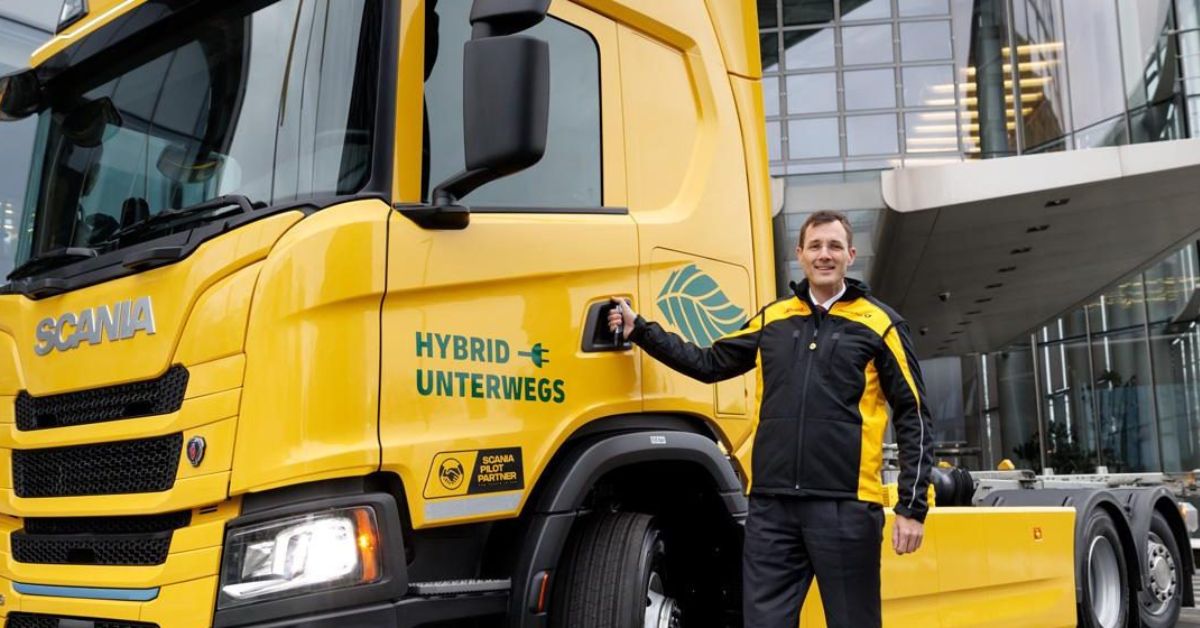As global logistics leaders race to decarbonise road freight, DHL has taken a notable step forward with the deployment of an Extended Range Electric Vehicle (EREV), developed in collaboration with Scania. This hybrid electric truck, equipped with a backup generator to extend operational range, was tested over 100 days between DHL parcel centers in Berlin and Hamburg. The EREV operated primarily on battery power, demonstrating strong environmental and operational performance even in the face of charging infrastructure limitations.
Objectives
Evaluate operational viability of EREV in long-haul parcel transportation, measure carbon emissions savings compared to a conventional diesel truck, test energy efficiency and range resilience under real-world conditions, and assess regulatory readiness for recognizing bridging technologies.
Vehicle Specifications
- Length: 10.5 meters (excluding trailer)
- Gross vehicle weight: 40 tons
- Electric motor: 230 kW (295 kW peak)
- Battery capacity: 416 kWh (next-gen version to have 520 kWh)
- Generator: 120 kW fuel-powered backup (cannot directly power the drive axle)
- Max speed: 89 km/h
- Cargo volume: Approx. 1,000 parcels in one swap body
- Towing capacity: Capable of pulling an additional swap body trailer
Key Results (February to May 2025)
- Distance covered: ~22,000 kilometers
- Electric-only operation: 91.9 percent of the time
- Range extender usage: Only 8.1 percent of distance
- CO₂e savings: Nearly 16 metric tons compared to a similar diesel truck
- Operational impact: Stable performance and reliable scheduling even with charging constraints
Strategic insights
The EREV proved to be a strategic asset for DHL, offering remarkable operational flexibility by ensuring route certainty even under unpredictable charging conditions, such as occupied or malfunctioning stations. This allowed the company to preserve schedule integrity while keeping emissions in check. Impressively, over 90 percent of the kilometers driven utilized grid-charged electricity sourced from renewables, bringing the vehicle’s emissions profile close to that of a fully electric truck.
The design also features scalable software controls that can limit generator use, offer enhanced emission control and align with future policy mandates. Additionally, its infrastructure-agnostic nature sets it apart from fully electric trucks, as it isn’t solely dependent on public charging stations—a crucial advantage on long-haul routes where such infrastructure remains scarce.
Regulatory considerations
Despite its environmental potential, the EREV currently lacks proper classification under EU and national emission standards, especially in relation to CO₂-based road tolls. DHL has called for policy reforms to recognize proportional emission reductions through new toll categories and emission classes based on certified performance.
The company has welcomed references to EREV technology in the German government’s coalition agreement but emphasizes the urgency of translating this intent into actionable policy frameworks.
Conclusion
DHL’s pilot project with the Scania EREV showcases a transitional yet highly effective solution for low-emission logistics. It bridges the gap between current infrastructure constraints and long-term electrification goals. By combining battery-electric propulsion with the flexibility of a generator-based range extender, EREV technology offers a viable path to decarbonize heavy freight operations today.
DHL is ready to scale up deployment, pending regulatory clarity. The case of the EREV presents a compelling model for other logistics providers seeking practical, immediate climate action while broader EV infrastructure continues to develop.









